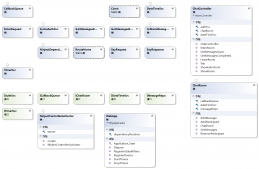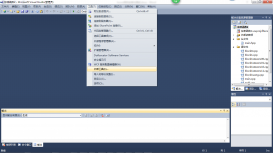本文以示例形式分析了Asp.net中Response.Charset与Response.ContentEncoding的区别,分享给大家供大家参考。具体如下:
1.Response.Charset
ASP.NET 中示例:
|
1
|
<%@ Page CodePage=936 %> |
CodePage 告诉 IIS 按什么编码来读取 QueryString,按什么编码转换数据库中的内容……
2.Response.ContentEncoding
获取或设置输出流的 HTTP 字符集。
Response.Charset
获取或设置输出流的 HTTP 字符集。微软对 ContentEncoding、Charset 的解释是一字不差,其实可以这样理解:ContentEncoding 是标识这个内容是什么编码的,而 Charset 是告诉客户端怎么显示的。
我们可以做一个示例来理解:
示例1.
|
1
2
3
|
Response.ContentEncoding = System.Text.Encoding.GetEncoding("gb2312");Response.Charset = "utf-8"; Response.Write("服务器之家"); |
然后用浏览器打开网页,可以发现是乱码,可是用记事本查看源文件,又发现不是乱码。这就说明了:ContentEncoding 是管字节流到文本的,而 Charset 是管在浏览器中显示的。
示例2.
|
1
|
Response.ContentEncoding = System.Text.Encoding.GetEncoding("gb2312"); |
通过 Fidller,发现 HTTP 头中是:text/html; charset=gb2312。说明没有指定 Charset 时,就用 ContentEncoding 的 Charset 作为 charset。
示例3.
|
1
2
|
Response.ContentEncoding = System.Text.Encoding.GetEncoding("gb2312");Response.Charset = "123-8"; |
HTTP 头中是:text/html; charset=123-8。网页显示正常,说明如果 charset 错误,仍然以 ContentEncoding 的 Charset 作为 charset。
示例4.
|
1
2
|
Response.ContentEncoding = System.Text.Encoding.GetEncoding("gb2312");Response.Charset = ""; |
HTTP 头中是:text/html;。HTTP 头中没有 charset,网页显示正常,说明 HTTP 头中没有 charset,仍然以 ContentEncoding 的 Charset 作为 charset。
补充:
一.Response.ContentType
获取或设置输出流中 HTTP 的 MIME 类型,比如:text/xml、text/html、application/ms-word。浏览器根据不同的内容启用不同的引擎,比如 IE6 及以上版本中就会自动将 XML 做成树状显示。
|
1
|
<meta http-equiv="Content-Type" content="text/html; charset=gb2312" /> |
这是 HTML 中的标签,不能用在 XML、JS 等文件中,它是告诉浏览器网页的 MIME、字符集。当前面的相关内容没有指定时,浏览器通过此来判断。
二.使用流形成一个word文件例子
|
1
2
3
4
5
6
7
8
9
10
11
|
protected void btnResponseWord_Click(object sender, EventArgs e){ Response.Clear(); //清空无关信息 Response.Buffer= true; //完成整个响应后再发送 Response.Charset = "GB2312";//设置输出流的字符集-中文 Response.AppendHeader("Content-Disposition","attachment;filename=Report.doc");//追加头信息 Response.ContentEncoding = System.Text.Encoding.GetEncoding("GB2312");//设置输出流的字符集 Response.ContentType = "application/ms-word ";//输出流的MIME类型 Response.Write(TextBox1.Text); Response.End();//停止输出} |
三.Response.AppendHeader使用
@文件下载,指定默认名
|
1
2
|
Response.AddHeader("content-type","application/x-msdownload");Response.AddHeader("Content-Disposition","attachment;filename=要下载的文件名.rar"); |
@刷新页面
|
1
|
Response.AddHeader "REFRESH", "60;URL=newpath/newpage.asp" |
这等同于客户机端<META>元素:
|
1
|
<META HTTP-EQUIV="REFRESH", "60;URL=newpath/newpage.asp" |
@页面转向
|
1
2
|
Response.Status = "302 Object Moved"Response.Addheader "Location", "newpath/newpage.asp" |
这等同于使用Response.Redirect方法:
|
1
|
Response.Redirect "newpath/newpage.asp" |
@强制浏览器显示一个用户名/口令对话框
|
1
2
|
Response.Status= "401 Unauthorized"Response.Addheader "WWW-Authenticate", "BASIC" |
强制浏览器显示一个用户名/口令对话框,然后使用BASIC验证把它们发送回服务器(将在本书后续部分看到验证方法)。
@如何让网页不缓冲
|
1
2
3
4
5
|
Response.Expires = 0Response.ExpiresAbsolute = Now() - 1Response.Addheader "pragma","no-cache"Response.Addheader "cache-control","private"Response.CacheControl = "no-cache |
希望本文所述的Asp.net中Response.Charset与Response.ContentEncoding的区别及相关用法对大家Asp.net程序设计有所帮助。















